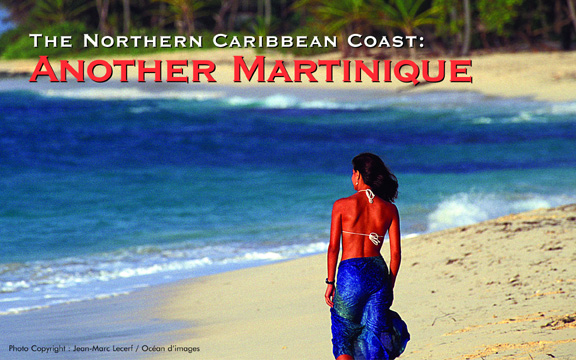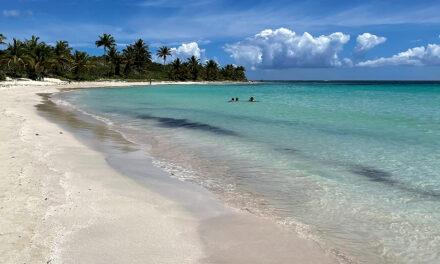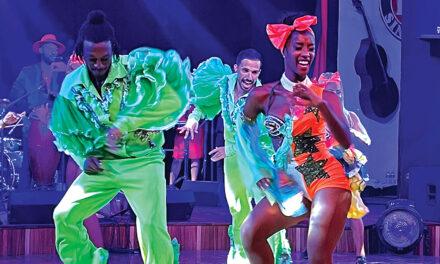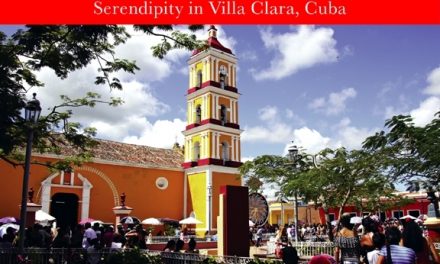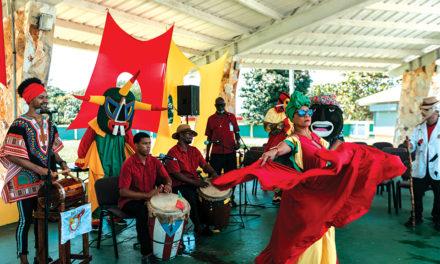The Northern Caribbean Coast:
Another Martinique
Published in the Fall 2005 Issue of Canadian World Traveller
Text: Excerpt from Ulysses’ travel guide to Martinique, by Claude Morneau (www.ulyssesguides.com).
Cover Photo: Copyright Jean-Marc Lecerf www.oceandimages.com
Other Photos: Courtesy of Martinique Tourism Authority (www.martinique.org or www.martiniquetourisme.com).
Upon visiting Martinique’s northern Caribbean coast, you’ll discover a landscape entirely different from the idyllic white-sand beaches found in the south. The beaches seem wilder and their grey and even black sand is a reminder of the presence of the notorious Montagne Pelée volcano, which, at 1,397m (4,656ft), is the highest peak on the island.
In 1902, this imposing northern giant unleashed its wrath on Martinique with an eruption that claimed 30,000 lives and completely obliterated the city of Saint-Pierre, the little Paris of the Antilles.
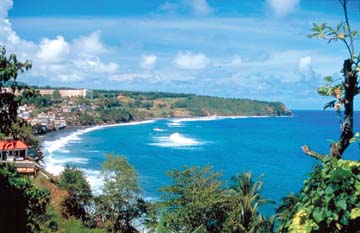 The northern Caribbean coast also has much to offer in terms of culture, beaches, nature and sports.
The northern Caribbean coast also has much to offer in terms of culture, beaches, nature and sports.
There’s Schœlcher and its casino, Le Carbet and its long beach, and Anse Turin, where Gauguin spent a brief but significant period of his life as an artist.
There are untouched beaches in the north and hiking trails that lead through the forests and mountains. The northern Caribbean coast is the cradle of Martinique.
This is where Columbus landed in 1502 and French colonisation began in September of 1635, when the Carib Indians welcomed d’Esnambuc and his companions with open arms. The villages on the northern Caribbean (Case-Pilote, Le Carbet, Saint-Pierre) were thus Martinique’s first, and boast the oldest buildings and most venerable churches on the Island of Flowers.
Le Carbet
According to legend, Christopher Columbus discovered Martinique when he landed at Le Carbet on June 15, 1502. Le Carbet’s glorious past has helped make it a lively town that attracts a good number of visitors interested as much in Martinique’s history and heritage as in the area’s beautiful beaches, which stretch nearly 3km (almost 2mi), from Le Coin to Anse Latouche.
Not to be missed at Le Carbet are the numerous examples of colourful traditional Creole houses; the Aqualand water park, that is sure to please the whole family; the Musée Gauguin, where you can learn about Paul Gauguin’s 1887 sojourn in Martinique; and the Anse Latouche plantation, a fabulous botanical garden on the site of an authentic 17th century plantation.
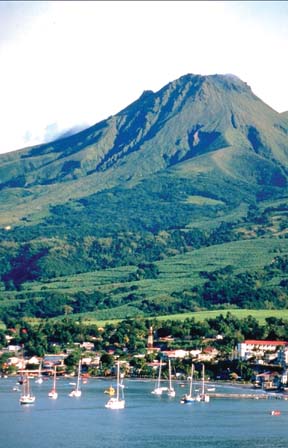 Montagne Pelée
Montagne Pelée
Montagne Pelée, which is at least 400,000 years old, stands at 1,397m (4,656ft). Since the French first arrived on the island, there have been four eruptions.
The first, a small one, was in 1792 and the second in 1851. Then, between 1902 and 1904, fiery clouds wiped out Saint-Pierre and then Morne Rouge, killing 30,000 people. The volcano’s last rumblings, recorded between 1929 and 1932, fortunately had no disastrous consequences.
These two major eruptions introduced a new volcanic phenomenon to observers, involving the expulsion of clouds of incandescent ash and the formation of viscous domes in the volcano’s crater.
They have since been termed Pelean. Hiking trails now lead to the volcanic cones that were created by the 1902 and 1929 eruptions. Though the most direct route to the deadly volcano is by way of Morne Rouge, some visitors might prefer tackling its north face, via Grand’Rivière.
Saint-Pierre
The next stop on Martinique’s northern Caribbean coast is the harbour of Saint-Pierre, the martyred city where close to the entire population (30,000 people) perished when Montagne Pelée erupted on May 8, 1902. Before this terrible catastrophe, Saint-Pierre, with its theatres, beautiful buildings and imposing residences was nicknamed the petit Paris des Antilles (the little Paris of the Antilles) and its bourgeoisie lived a life of luxury.
Today, Saint-Pierre has barely 5,000 inhabitants, who live on fishing, tourism, agriculture and livestock breeding. In 1990, Saint-Pierre was proclaimed a French National Heritage site and dubbed the 101st City of Art and History, which gave it a much-needed boost.
As far as tourism is concerned, Saint-Pierre, the true historic capital of Martinique, is of undeniable interest. One example of the rich cultural heritage and tapestry that is commemorated by the residents of Saint-Pierre is the Musée Vulcanologique, where visitors can discover the countless ruins of significant monuments and the shipwrecks of vessels that were moored in the harbour at the time of the tragic eruption.
If you’re interested in an easy and unusual way to discover Saint-Pierre’s many sights, climb aboard the Cyparis Express, a small train that will take you on a 1 hour guided tour of the city.
Just outside the city is the new Centre de Découverte des Sciences de la Terre (Earth Sciences Discovery Centre), located at the foot of Montagne Pelée. Temporary exhibits cover such topics as bird’s eye views of Martinique and the history of volcanoes and other natural phenomena such as earthquakes and cyclones.
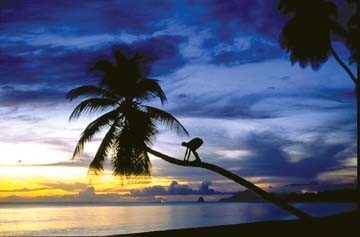 Le Prêcheur
Le Prêcheur
The village of Le Prêcheur (The Preacher) is the last one on the northern Caribbean coast. It was named after a rock formation, which disappeared when Montagne Pelée erupted and was reputedly shaped like a preacher.
At nearby Anse Céron, there is a dirt road leading to Habitation Céron, an interesting place where visitors can learn more about everyday life during the island’s slavery era.
On the grounds of the former plantation, where sugar cane, coffee, cocoa, cassava and bananas were cultivated, you can still see the miserable wooden shacks that were once crowded with slaves. The main path, with big ponds on either side, leads to the family mansion.
Outdoor Activities
In addition to the numerous swimming and hiking possibilities the region offers, there are a large number of diving sites along the northern Caribbean coast, each more spectacular than the last. For example, Cap Enragé, a little to the north of Case-Pilote, boats a pretty little coral garden teeming with colourful marine animals. Right nearby, you can examine the corals on the sandy sea-bottom at Fond Boucher, some 6m (20ft) below the surface.
Nevertheless, top billing still goes to Saint-Pierre’s harbour, where you can examine the wreckage of a dozen or so boats that sank when Montagne Pelée erupted in 1902. The Roraima (50m/166ft) and the Raisinier (15m/50ft) are the most interesting.
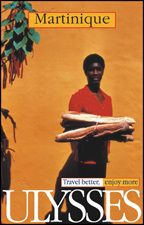
About the Author
Claude Morneau is the author of the Ulysses’ travel guide to Martinique (see cover on left), available in all good bookstores or on the Web at www.ulyssesguides.com.
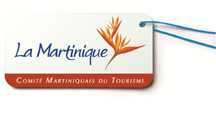 For More Info:
For More Info:
Contact the Martinique Tourism Authority
Tel: 1-866-313-7262
www.martinique.org or www.martiniquetourisme.com

